Kickstarter

Province is one of Kickstarter's success stories: with a goal of $5,000, it ended up raising over $48,000, surpassing the initial estimated amount by over 960%, with over 6,000 backers.
Its resounding success was due to several factors, including:
- it's an Eurogame;
- it's a small, portable game;
- the funding was extremely affordable;
- it's a simple game, but full of strategy and competitiveness.
Let's get to know Province!
Province - Game Info
Province is a 2-Player game, age 13+, by designer Samuel Strick, who's also the artist for the game.
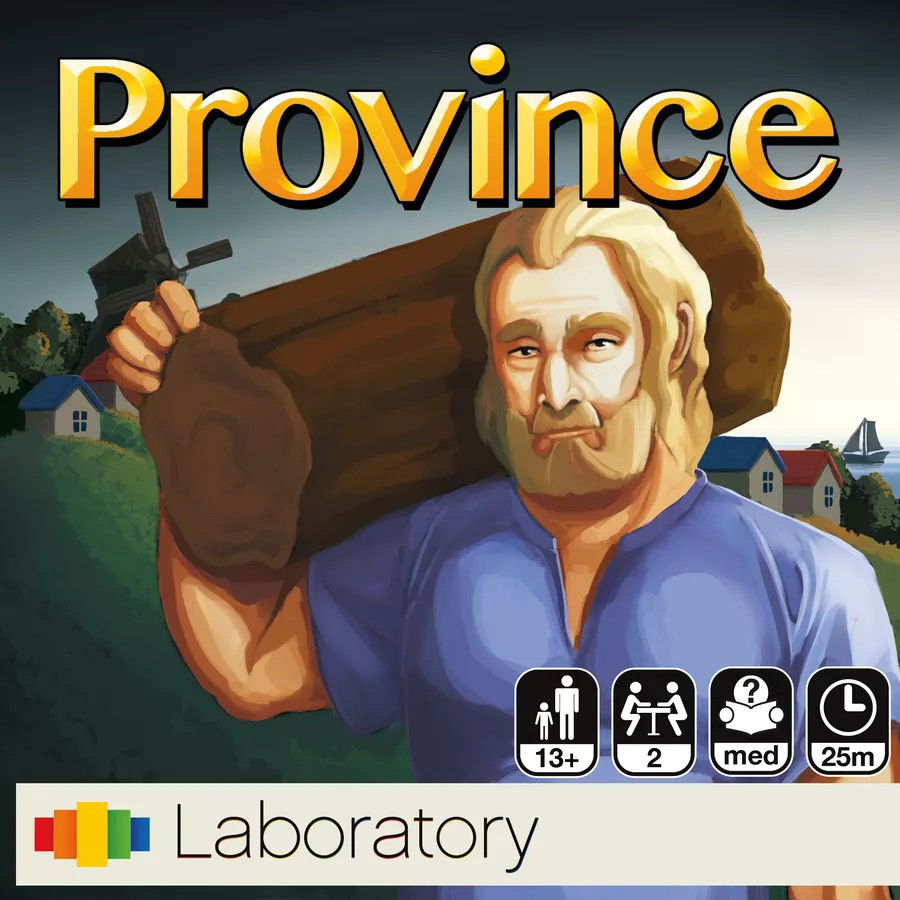
Released in 2014 by Laboratory Games, it still hasn't been released in Brazil. The base mechanic of the game is the rondel.
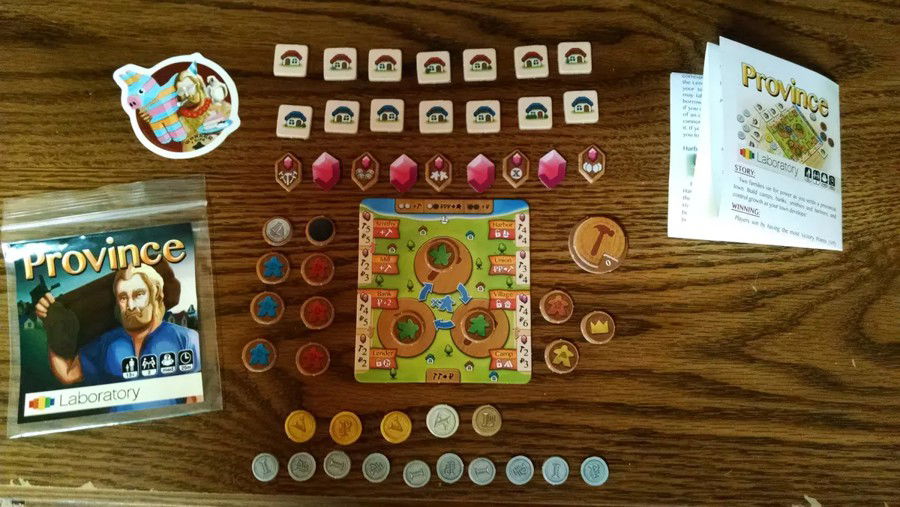
On 2014, same year of its release, Province was nominated Best 2-Player Board Game by Golden Geek Best - a well deserved nominee!
The Game
Two families vie to develop a provincial village. With the help of local workers, being the first to build the most important buildings in the area will make all the difference. This will grant you other advantages, such as more workers, more trading opportunities, more money, and perhaps even the right to become Harbor Master. Which family will prevail and contribute the most to local development?
This is the background for Province!
Province setup is this:
- place the board in the center of the table;
- place 1 green worker in each of the 3 work cycle locations in the center of the board;
- place the Labor marker next to the board;
- draw 5 Goal tokens (out of 9) and put them in a pile, revealing only the top one;
- each player takes their 7 colored structures;
- Randomly choose the first player, give them 2 coins, and 3 coins to the second player;
- Leave the remaining tokens (worker tokens, creditor tokens, sailor tokens, coin tokens, and ship tokens) near the board.
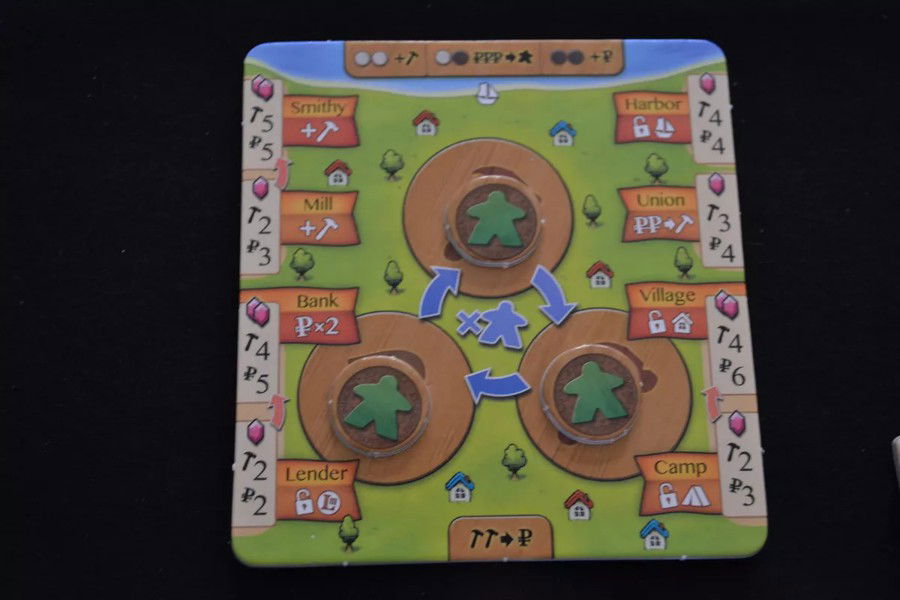
A turn in Province has two phases, both highly strategic:
- Phase 1: Work Cycle phase;
- Phase 2: Resource Spending phase.
Phase 1, for obvious reasons, is the most important. Here, we direct available workers to generate more coins (money) and labor power in the work cycle. All eight structures that can be built in the province need an amount of Labor and Money.
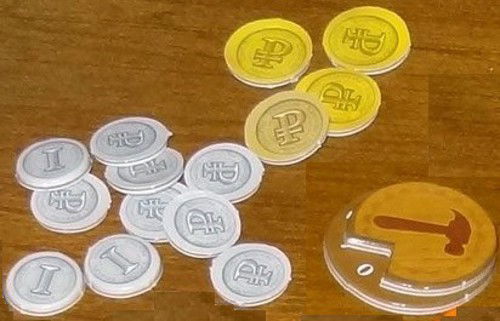
To obtain labor and/or money, simply move the worker clockwise; they can only be moved one space clockwise in the work cycle. Two spaces generate labor and one generates money. The worker will generate the resource from where it stops.
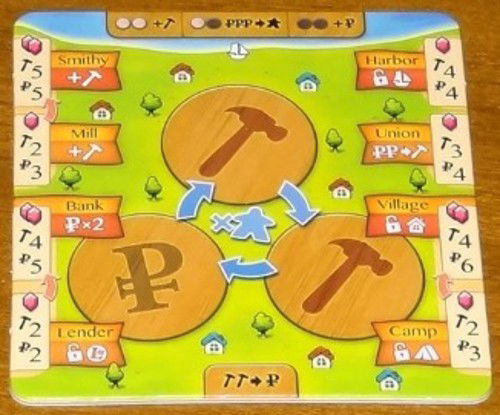
This is highly strategic, as you'll get the resource you want, but it could leave the worker in a privileged position for the next player to use. In other words, sometimes, strategically, it's not a good idea to move all the workers, as it could give the next player a benefit.
On your turn, you must move at least one worker in the work cycle; the others are optional. Just be aware that they can only make one clockwise movement and grant you the resource, which is either labor or money, depending on the space.
There are two locations with labor and one with money. Be aware of this.
Imagine you need 1 Labor, and to do so, you move the worker at the top of the work cycle clockwise. That's it, you have your Labor and choose not to move any more workers. On the other player's turn, they will have 2 workers whose next location in the work cycle is to receive money, so they will receive 2 coins. That's the only choice you left them! So, consider carefully which workers you will activate.
In this Phase, additionally, if the Mill and Smithy are already built, each of them gives you an additional Labor at the start of your turn. Similarly, if you have the Harbor, at the start of your turn, one of three things can happen:
- you can receive an additional Labor;
- you can hire a sailor;
- you can receive a coin.

But for that to happen, you must have built these structures in the first place.
To build a structure, we go to Phase 2: Resource Spending. With money in hand and labor gathered, choose one of the 8 structures and build it. However, be aware that only one structure can be built per player per turn.
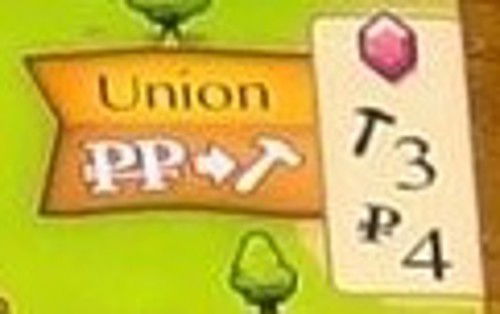
Also, some structures require others to be built first. Remember: Structures only award victory points to the first player to build them. The second player will get their benefits, just like the first player who built it, but they do not get victory points.
The Structures are:
- Camp: grants 1 victory point and one additional worker in the work cycle;
- Village: grants 2 victory points and one additional worker in the work cycle. This can only be built after you build the Camp;
- Union Hall: grants 1 victory point and allows you to exchange 2 coins for 1 Labor;
- Harbor: grants 1 victory point and other benefits at the start of the turn (as we mentioned before);
- Lender: grants 1 victory point and allows you to use another player's structure, while keeping the Lender's token;
- Bank: grants 2 victory points. When you receive coins in the work cycle, the Bank doubles it. This can only be built after you build the Lender;
- Mill: gives 1 victory point and 1 Labor at the start of your turn;
- Smithy: gives 2 victory points and 1 Labor at the start of your turn. This can only be built after you build the Mill.
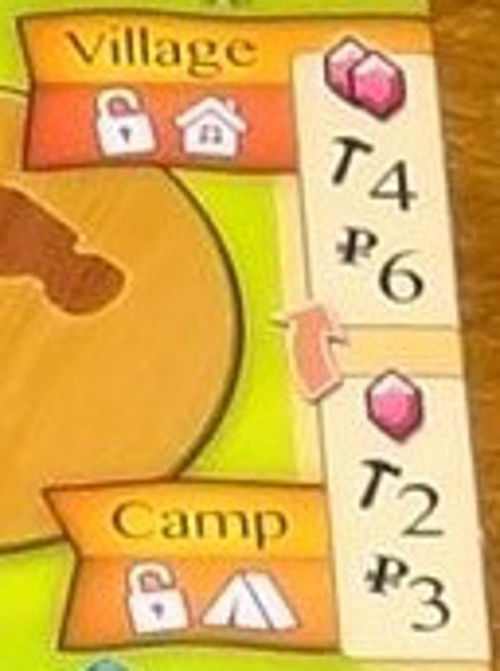
Be aware that what and when to build a structure is very strategic!
One very important thing: in Phase 2, Resource Spending, you can "grind" as many times as you want. Grind means you can trade 2 Labor for 1 Coin as many times as you want, as if you sent 2 of your workers to work, and they earn 1 coin. This should be used strategically, as any unused Labor will be lost at the end of your turn, while Coin carries over turn to turn.

Regarding Goal tokens, any time during your turn that you meet the requirements of the face-up Goal in the stack, you can take it, and each Goal gives you 1 victory point at the end of the game.
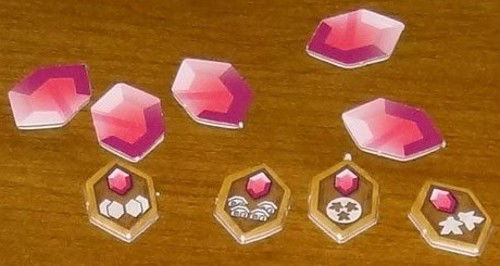
After taking a Goal token, reveal the next one on top of the pile. If both players fulfill it, the Goal is discarded and the next one is revealed. Some Goals include:
- have 2 more workers than the starting ones;
- get 4 Labor on your turn;
- have 5 coins at the end of your turn;
- have 2 structures with 2 victory points each;
- and so on.
Now it's the other player's turn. This is a turn in Province!
Ending the Game
The game ends when one of three things happen:
- a player has built their 7th structure;
- one of each structure has been built ;
- all goal tokens have been taken or discarded.
The player who triggered the game's end will finish their turn, and then each player tallies their victory points as follows:
- add the victory points earned for the structures;
- add the victory points earned for the goal tokens;
- if a player has the lender token, they lose 2 victory points.
The player with most victory points wins. If there is a tie, the player with most structures wins. If there is still a tie, the player with most workers wins. If the tie persists, the game ends in a draw.
Strategy Tips
Province is full of strategic decisions and resource management; it's straightforward, and yet still simple.
All these factors must be taken into account in Phase 1, where we'll move workers through the work cycle, remembering that there are two spaces that gain labor and one that gains coin. It's about developing a strategy in your head and putting it into practice, but knowing how and where to leave the workers for the next player.
To maximize this action and increase profits, remember to build the Bank, which will double your coin earnings, and also the mill and smithy, which will provide more labor. In other words, structures help a lot.
The easiest and quickest way to get more workers is by building the Camp and the Village, respectively (and necessarily) in that order. This will increase your possibilities, as you'll then have two more workers at your disposal. Remember that they always start at the top of the work cycle; this makes a difference, as they enter and their first actions will be to generate more labor.
To get more workers after that, you can only do so through the Harbor. If you're the Harbor Master (the first player to build it), you can roll the harbor coins, and then you'll have a chance to hire more workers - the sailors. The harbor is always a good option, as it can also provide other benefits.
Note that, if everything goes well, you can have up to eight workers in the work cycle at your disposal. This is the game's maximum potential. Go for it!
And the famous golden tip is: always build, and before your opponent does! All structures provide some help, and some can only be built after others. Building before your opponent is essential, as only the first to build the structure earns victory points. The second to build will get the structure's benefits, but not the points. This makes a huge difference in the endgame score.
To do this, you need to spend resources, that is, Phase 2. Build to your heart's content, but not without strategy: consider how the game's going, what you need, and also your opponent's resources, to know what they can or plan to build. Read the game and strategically leave workers in the work cycle in a way that doesn't allow your opponent to gain as much.
If you haven't built a structure you need, but your opponent has, it's good to have at least the lender, but use it with caution, as you can only "get rid" of it on the next turn, and either by paying 3 coins, or by being lucky enough that your opponent has also built the lender and ends up using it, taking the lender token from you. Also, be aware: in the end, whoever holds the lender token will lose 2 victory points!
Regarding the union hall, use it moderately, since the cost of 2 coins per 1 labor is steep, but useful from time to time, just like the lender. These are two structures, by the way, that I recommend building for points, so build them first, but hope you don't need to use them.
Finally, one thing you should also keep an eye on is your Labor. Don't take your eye off the Labor marker, and use all of it, as any surplus will simply be lost at end of turn. If you have any left over, make sure you have at least 2 left over so you can "grind" them, that is, convert 2 labor into 1 coin.
With these tips, plan your best strategy, manage your coins and labor, and win in Province!
Rules and Gameplay Videos
Rules:
Gameplay:
Pedagogical Tips
If you're looking for a simple game, but one that provides excellent and necessary stimulation for your child, Province is the game for you!
Everything in Province leads to the same goal: resource management, decision-making, logical and mathematical reasoning, and strategy.
Such Stimuli, when delivered in a playful way, are life lessons. Many games encourage this, but Province is quick, simple, and children learn it the best way: by playing.
Coin and Labor management are a constant. Some structures have a specific order to be built, so attention to these rules will also be required. This will also teach them that there's a time for everything, including an order for things to happen. This will encourage them to develop a strategy and be patient, after all, only one structure can be built per turn.
To use the resources, calculations and logical-mathematical reasoning will be required, but in a light-hearted way, with small values, which will encourage children to do math and show them that a simple task can be fun.
This way, strategy and decision-making will be "embedded" in decisions throughout the game, and they'll learn without realizing it. It's great!
Pedagogically, Province encourages management, strategy, decision-making, logical-mathematical reasoning, and, to top it all off, it's fun!
I recommend Province for your collection!!!








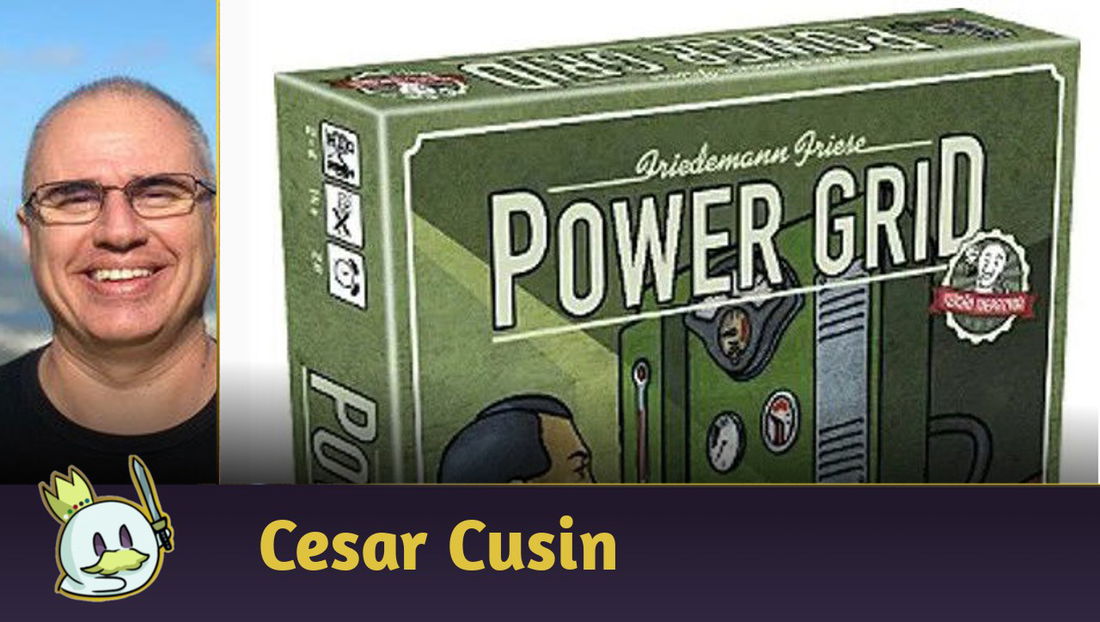
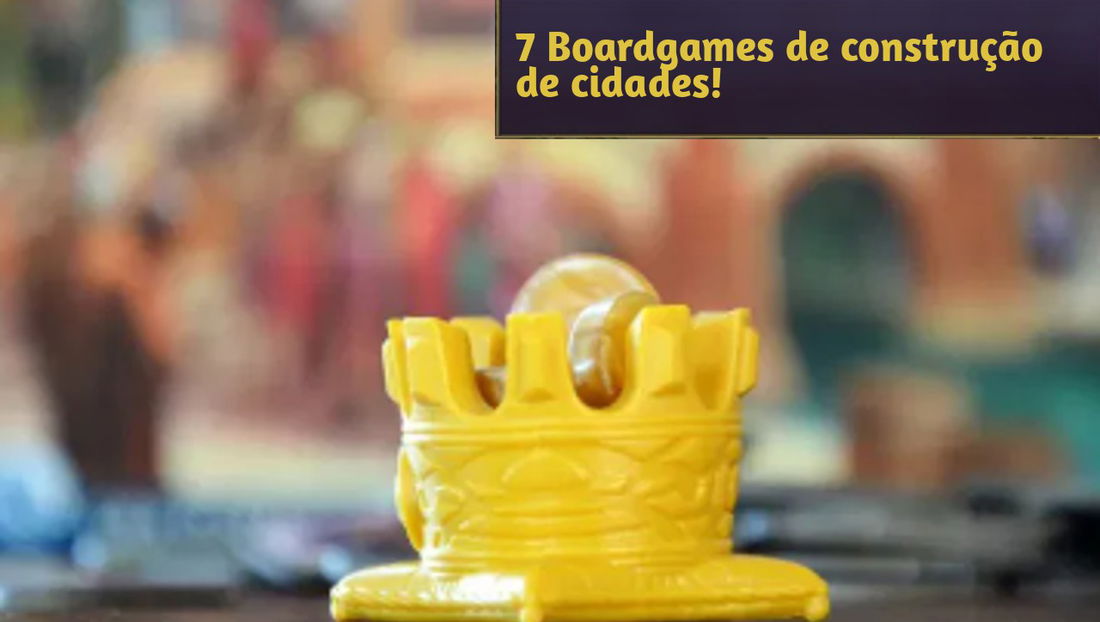



— Comentarios 0
, Reacciones 1
Se el primero en comentar